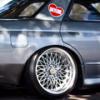Efr turbo housing and waste gate options.
Announcements
-
Similar Content
-
Latest Posts
-
To be fair, you could got to the movies on Tuesday for $2 in 1994 as well. Or buy the median house in Sydney for $92k
-
By soviet_merlin · Posted
Man, I'd love to buy a brand new GTR for $50k. If someone invents a time machine please let me know. -
It was more expensive than the base model GT-R, however cheaper than the V·spec and V·spec II. I've attached a scan of one of the price lists I have collected over the years. A lot of people blame the US market however I don't think we can blame any specific region for the price increases over the years.
-
Can you post of pic of exactly what you mean? Unless you have a fancy aftermarket intercooler, the AC and intake are not connected in any way
-
By Matt_Yabai · Posted
Hey folks, I need to put bucket seats in my v35. Bride have removed N107-RO rails(drivers side for reclining) from their website and I cannot find it anywhere in stock. I wanted the reclining rail so I can run the ADR approved bride Stradia reps from crank motorsport(the rails they make need modification and sit you too high, so that is not an option). Has anyone got the N107-ROs installed with a stradia or similar seat? What's the seating position like? I want to make sure it's a good fit before I hit up people in japan to track them down for me. My alternative is to get bride fixed back rails and run a Cobra Suzuka. If anyone one has this combo I'd love to hear from you. Cheers
-




Recommended Posts
Create an account or sign in to comment
You need to be a member in order to leave a comment
Create an account
Sign up for a new account in our community. It's easy!
Register a new accountSign in
Already have an account? Sign in here.
Sign In Now